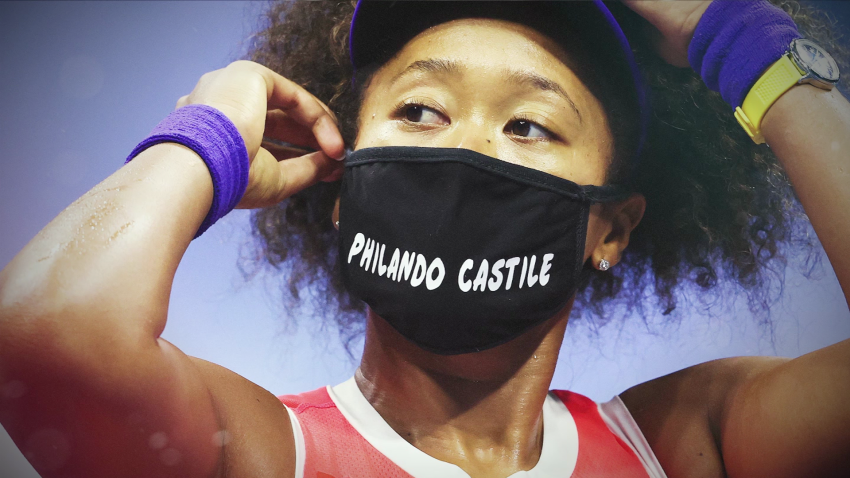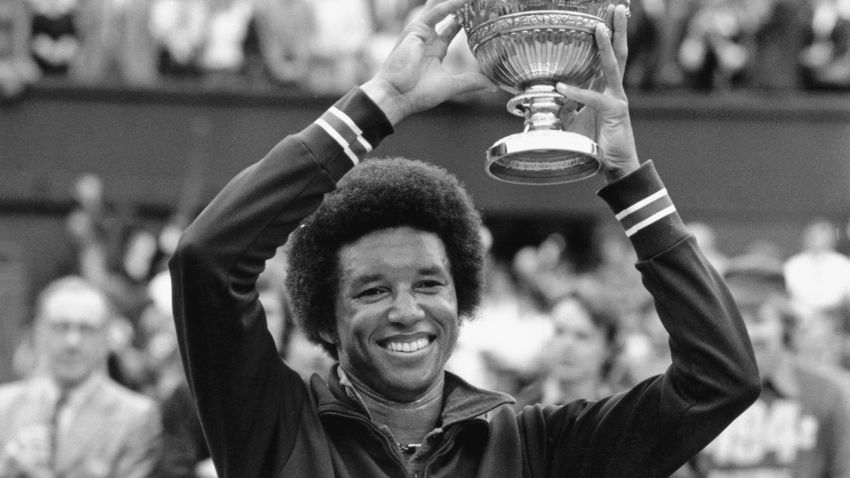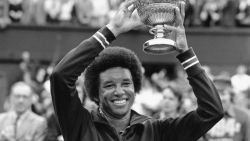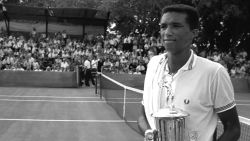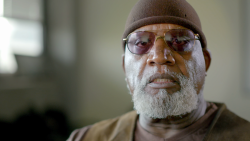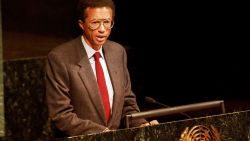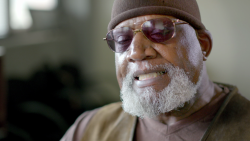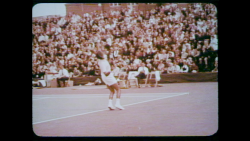Arthur Ashe balletically leaps across the grass court, his gold chain peeking from behind his white polo shirt. He serves unreturned aces and then returns low forehand volleys as his opponent, Jimmy Connors, looks down in frustration.
The opening scenes of the new CNN film, “Citizen Ashe,” show moments from Ashe’s Wimbledon victory against Connors in July 1975, when he became the first and only Black man to have won the prestigious tennis grand slam.
But the historic match symbolized the tension Ashe faced throughout his career; the weight of expectation from the tennis world, the racism he faced as a Black athlete and his humanitarian work.
“I think I can almost withstand just about anything. As an African-American athlete, I have experienced racism as a tennis player, going way back,” Ashe says in an interview in the documentary. “I have played extraordinary matches under unbelievable circumstances, but Wimbledon tied my whole life together.”
In July 1996, MaliVai ‘Mal’ Washington became the second Black man to reach a Wimbledon final – a record the now 53-year-old has held for nearly 26 years.
“To think that he (Ashe) could perform on the tennis court the way he did, and then choose to be an activist the way he was in ways that a lot of Black players would not have been comfortable doing given the time … he was just very different,” Washington tells CNN Sport.
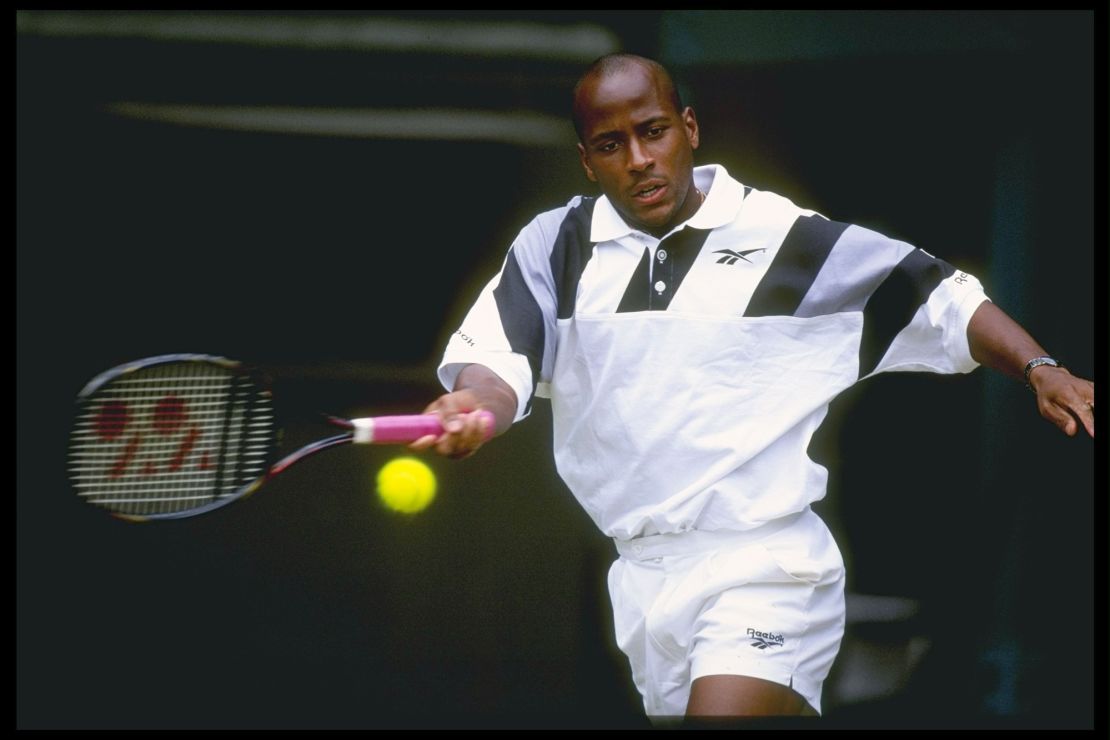
‘There just weren’t a lot of Black players’
When he turned pro aged 20, Washington was one of the few Black players on tour and was billed the next Arthur Ashe.
“It was wonderful to be compared to him, but considering I turned pro in 1989 and, you know, he was winning grand slams in the 1960s and 70s, it just shows you the glaring, obvious fact that there just weren’t a lot of Black players out there since he last won his last major,” he says.
Like Washington, Ashe started playing tennis at an early age.
Born in July 1943 in Richmond, Virginia, he was introduced to the sport when his father, Arthur Sr., became a caretaker for Brook Field Park in 1947, a segregated playground equipped with tennis courts, a baseball field, a pool, an outdoor area and basketball courts.
As his tennis skills improved, Ashe needed to take a step up in the quality of the opponents he faced. However, his opportunities were stunted by segregation. For example, he was often shunned by the neighboring Byrd Park youth tournament because the public tennis courts were “Whites only.”
At the age of 10, Ashe had a chance encounter with physician and tennis coach Dr. Walter Johnson that would change his life. Johnson, who mentored 11-time grand slam champion Althea Gibson, coached Ashe and helped him to win multiple junior tennis competitions.
Ashe spent his senior year in high school in St. Louis, Missouri, before being offered a full scholarship to attend UCLA. In 1963, he became the first Black American man to play on the United States Davis Cup team.
‘All brawn and no brains’
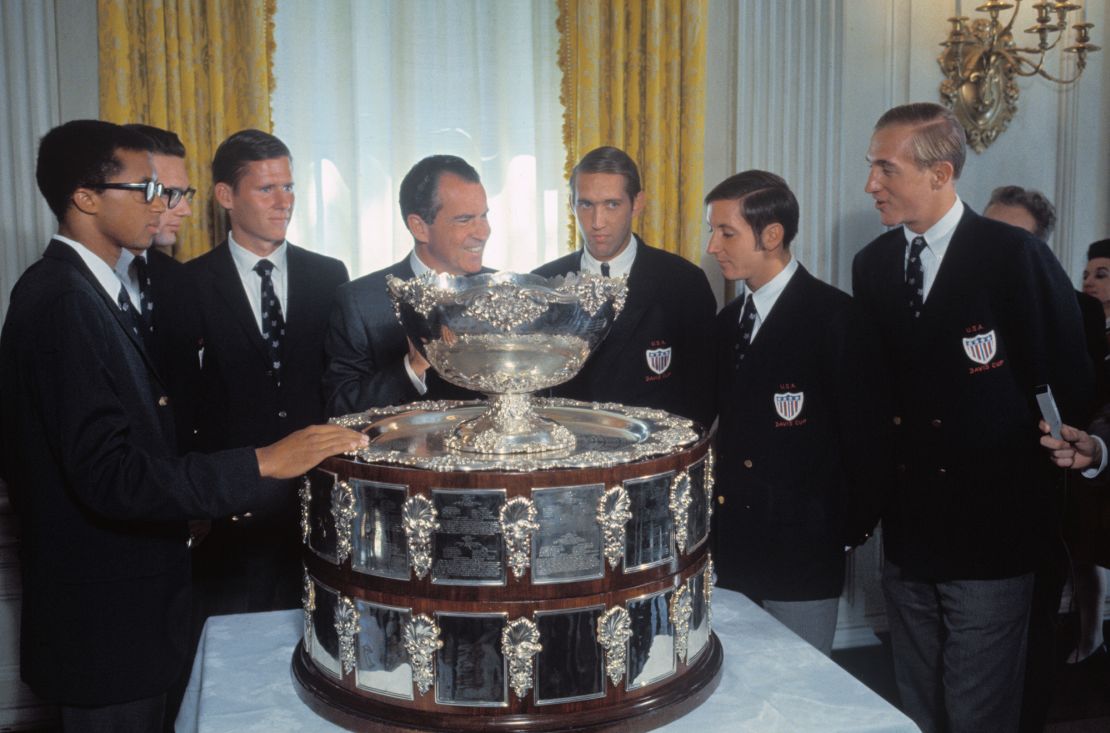
As Ashe garnered status in the tennis world, his reluctance to speak out on social issues affecting Black communities in the US caused friction between himself and members of the civil rights movement.
In 1967, civil rights activist and sociology professor at San Jose State University Harry Edwards founded the Olympic Project for Human Rights (OPHR). He leveraged the group to organize a boycott of the 1968 Mexico City Olympic Games, in protest of the racism Black athletes faced in the US. While athletes including NBA legend Kareem Abdul-Jabbar advocated for the movement, Ashe did not.
“All around me, I saw these athletes stepping out in front trying to demand civil rights. But I was still with mixed emotions,” Ashe says in an interview in the film. “There really were times when I felt that maybe I was a coward for not doing certain things, by not joining this protest or whatever.”
In his early career, Ashe toed the line between remaining politically neutral to pacify his White colleagues and publicly condemning the racism faced by Black athletes.
“I sense confusion in what an athlete should be, especially in an African-American context. There does still persist in the world myths about Black athletes because we tend to do disproportionately well in athletics,” Ashe adds. “Some people think we are all brawn and no brains. And I like to fight the myth.”
Speaking about Ashe’s observation, Washington says, “That myth has continued on, racism has continued on, discrimination has continued on.
“I can absolutely see how Arthur would have that feeling. And the ironic thing is he was the most intellectual person out on the tour at the time.”
A turning point
In 1968, after Ashe graduated from UCLA and served in the US Army, the American political landscape was upended.
Two figureheads of the African American equality movement – civil rights leader Martin Luther King Jr. and politician Robert F. Kennedy – were assassinated two months apart.
Speaking about King’s assassination, Ashe said: “I was very angry. I also felt slightly helpless. Things would be different now because, I mean, he was sort of seen as our knight in shining armor.
“Being a Black American, I felt a sense of urgency that I want to do something, but I didn’t know what it was.”
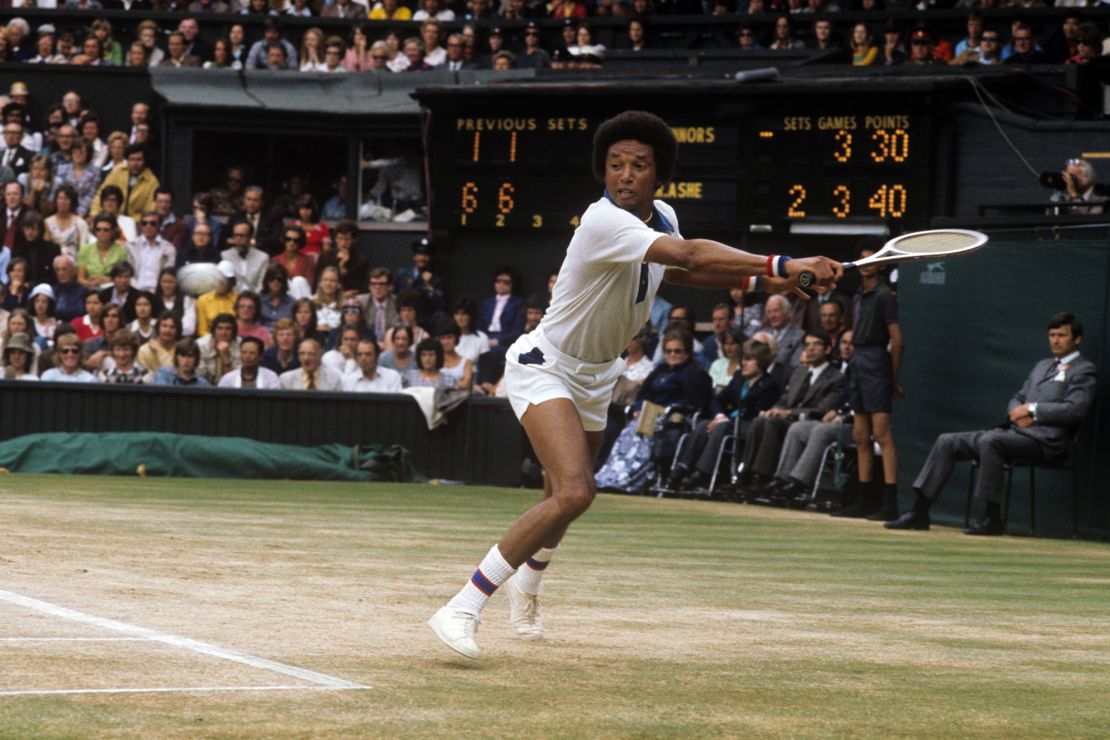
The world of tennis also experienced a tectonic shift with the dawn of the Open Era, when professionals were allowed to compete with amateurs. Ashe won his maiden grand slam title at the 1968 US Open when he defeated Dutch player Tom Okker, becoming the first and only Black man to have won the tournament.
Earlier that year, Ashe made his first political speech at a church in Washington, DC, where he spoke about his experiences as a Black athlete in society and voting – despite being penalized by the Army. He also joined athletes, such as baseball legend Jackie Robinson, in a statement demanding that the United States Olympic Committee endorse an ongoing ban on South Africa’s participation in the Olympics.
Ashe’s speech signaled a turning point in his tennis career. Instead of his platform preventing him from taking a stance on political issues, he began to use it as a vehicle for social change.
‘Calm and confident resolve’
In 1969, he co-founded the National Junior Tennis League to help children from deprived communities improve their academic and life skills through tennis. That year, he also sent a visa application to participate in the South African Open but was rejected due to the country’s apartheid regime.
He gained entry to the competition in 1973, however, and became the first Black professional tennis player in South Africa’s National Championships. Ashe told the South African government that he would not play in front of a segregated crowd and would not concede to limitations on his free speech while in the country.
“A lot of people were against him going, but he went anyway, which just shows you, you know, the power of doing what’s right. The power of saying, following your conscience and just doing the right thing,” Washington says.
Ashe worked with fellow activist Andrew Young to take action against apartheid, by raising money to help Black South African students attend college in the US and vowing not to return to the country after the Soweto uprising in 1976.
He married photographer Jeanne Moutoussamy-Ashe in 1977, and in December 1986, his daughter Camera was born.
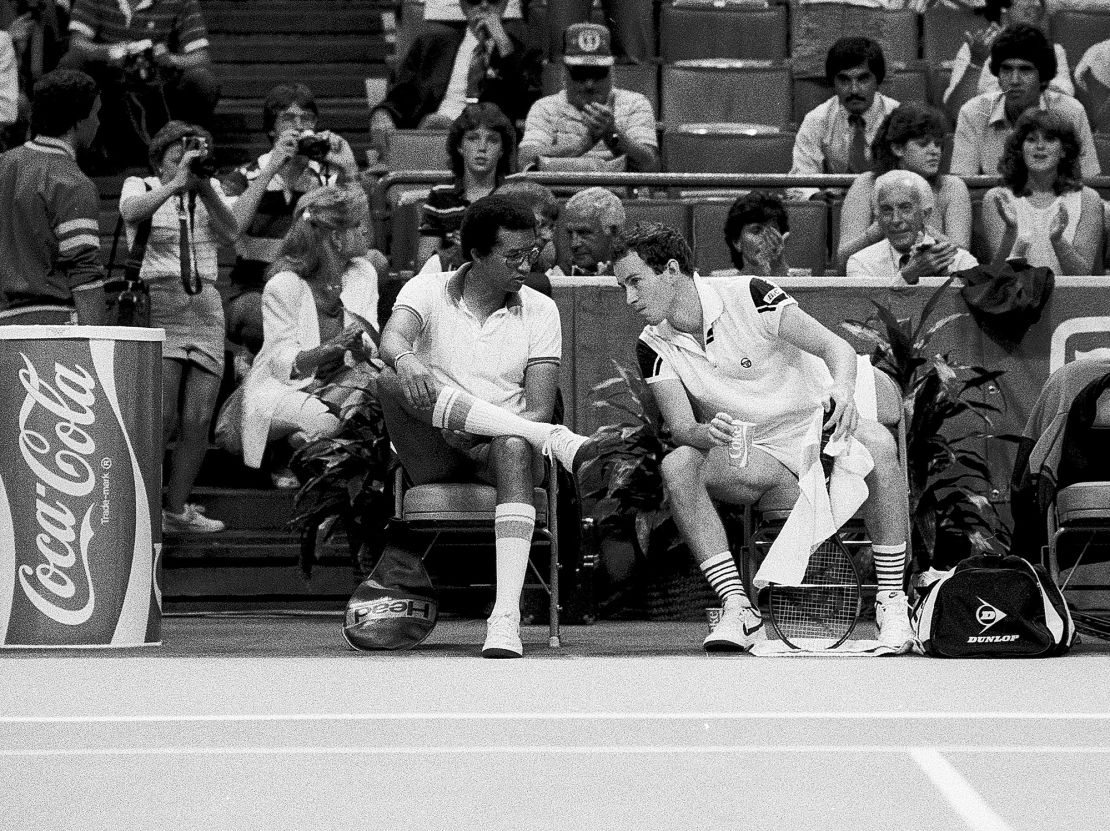
After his retirement from competitive tennis in 1980 and his subsequent five-year captaincy of the United States Davis Cup team, Ashe forged a blueprint for athlete activism.
He had the ability to facilitate nuanced discussions between opposing sides of the political spectrum, a skill that Washington says was “a very special gift.”
“His demeanor kind of reminds me of Nelson Mandela,” Washington adds. “That is why that’s one of the reasons why he was able to kind of do the things he was able to do, accomplish the things he was able to accomplish.
“It’s very powerful when you have a very calm and confident resolve.”
“Arthur would go in, and he would make statements that when you brushed away the gentility, the niceness, the intelligence, the calmness, his statement would be more militant than mine,” Edwards, the civil rights activist and sociology professor, says in an interview in the documentary.
“To this day, we have not found another person who could speak to both sides of the barricades, and that bridge became so critically and crucially important,” Edwards adds.
Inspiring a generation of athletes
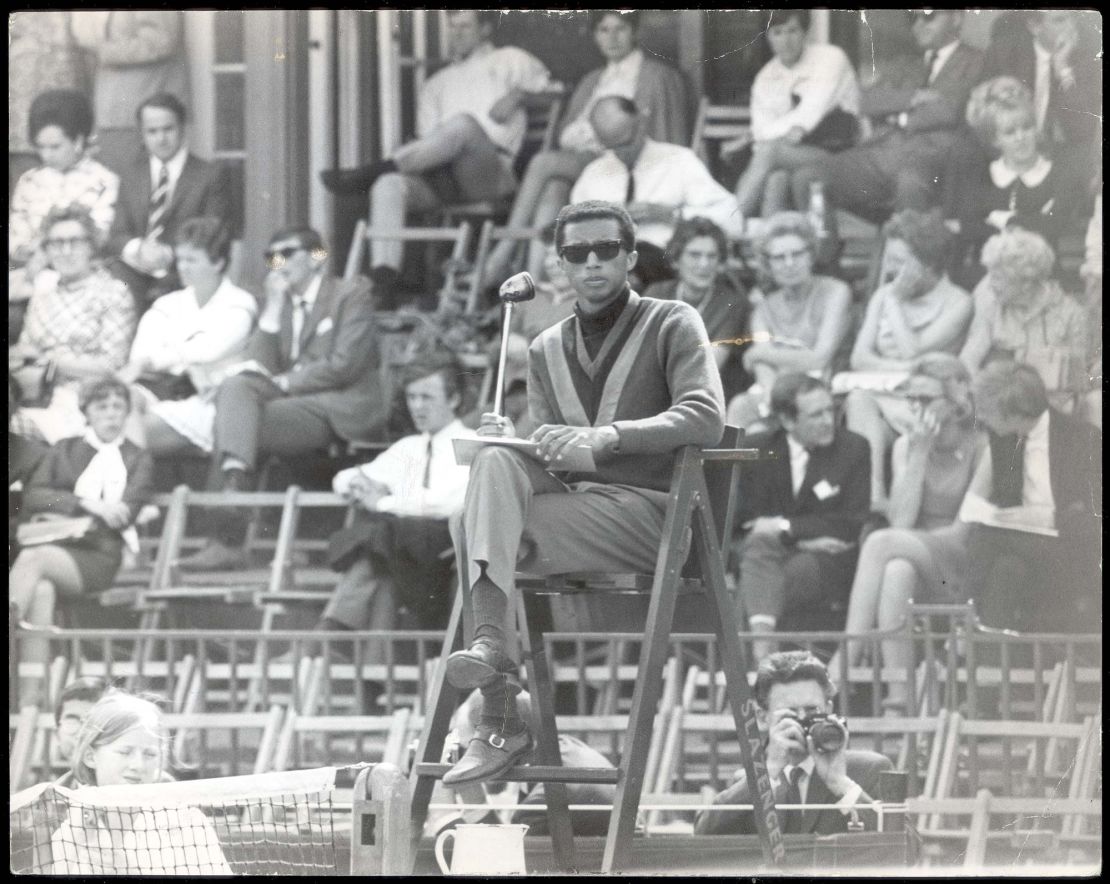
Towards the end of his life, Ashe advocated for marginalized communities, inspiring a generation of athlete activists – including Colin Kaepernick, Serena Williams, LeBron James and Naomi Osaka – to follow in his footsteps.
In 1988, Ashe learned he was HIV-positive while undergoing tests due to his having toxoplasmosis. Four years later, he publicly acknowledged his AIDS diagnosis and addressed the UN General Assembly on World AIDS Day.
He worked towards the end of apartheid with Nelson Mandela and protested against the US policy on returning Haitian refugees to their homeland, for which he was arrested.
Prior to his death from AIDS-related pneumonia in February 1993, he founded the Arthur Ashe Foundation for the Defeat of AIDS and the Arthur Ashe Institute for Urban Health.
“What I don’t want is to be thought of, when all is said and done, as… or remembered as a great tennis player. I mean, that’s no contribution to make to society,” Ashe says in an interview in the documentary.
Washington says Ashe “created the kind of roadmap” for modern athlete activism.
“Not everyone can be an Arthur Ashe. Not everyone can be a Nelson Mandela… these are giants in the activism world,” Washington says. “I don’t think there’s ever been a tennis player who was as active and as vocal as he has been.”
